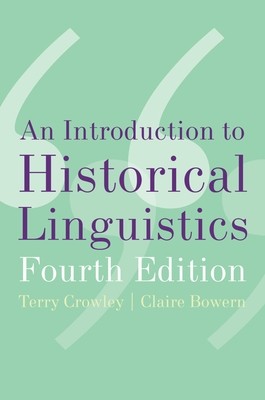
- We will send in 10–14 business days.
- Author: Terry Crowley
- Publisher: Oxford University Press, USA
- ISBN-10: 0195365542
- ISBN-13: 9780195365542
- Format: 15.5 x 23.1 x 2.3 cm, softcover
- Language: English
- SAVE -10% with code: EXTRA
An Introduction to Historical Linguistics, 4th Edition (e-book) (used book) | bookbook.eu
Reviews
Description
All languages change, just as other aspects of human society are constantly changing. This book is an introduction to the concepts and techniques of diachronic linguistics, the study of language change over time. It covers all themajor areas of historical linguistics, presenting concepts in a clear and concise way. Examples are given from a wide range of languages, with special emphasis on the languages of Australia and the Pacific. While the needs of undergraduate students of linguistics have been kept firmly in mind, the book will also be of interest to the general reader seeking to understand langauge and language change.
For this fourth edition, a number of new sections have been written, including many new problems and several datasets. Existing materials have been supplemented with new sections on grammaticalization, tonogenesis, morphological change, and using statistical methods in language classification.EXTRA 10 % discount with code: EXTRA
The promotion ends in 20d.20:05:37
The discount code is valid when purchasing from 10 €. Discounts do not stack.
- Author: Terry Crowley
- Publisher: Oxford University Press, USA
- ISBN-10: 0195365542
- ISBN-13: 9780195365542
- Format: 15.5 x 23.1 x 2.3 cm, softcover
- Language: English English
All languages change, just as other aspects of human society are constantly changing. This book is an introduction to the concepts and techniques of diachronic linguistics, the study of language change over time. It covers all themajor areas of historical linguistics, presenting concepts in a clear and concise way. Examples are given from a wide range of languages, with special emphasis on the languages of Australia and the Pacific. While the needs of undergraduate students of linguistics have been kept firmly in mind, the book will also be of interest to the general reader seeking to understand langauge and language change.
For this fourth edition, a number of new sections have been written, including many new problems and several datasets. Existing materials have been supplemented with new sections on grammaticalization, tonogenesis, morphological change, and using statistical methods in language classification.

Reviews